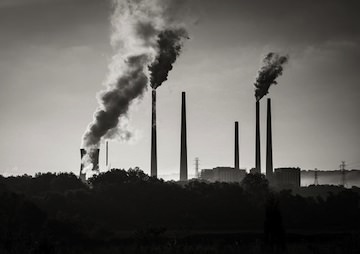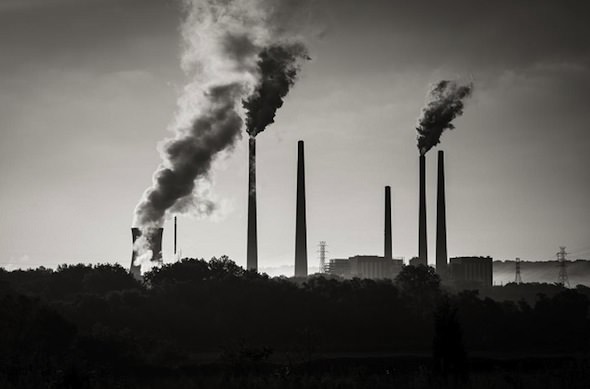Higher Social Costs Bolster Case for Emissions Curbs
Scientists in the U.S. estimate that economic damage caused by CO2 could be six times higher than the figure used to guide current energy regulations.
By Tim Radford, Climate News Network

Smoke stacks at a coal-fired power plant near Cincinnati. Photo by Robert S. Donovan
This Creative Commons-licensed piece first appeared at Climate News Network.
LONDON — Concerted action on climate change is looking like a bargain after research findings that the notional cost to society of global warming damage caused by carbon dioxide emissions has been seriously underestimated.
The US Environmental Protection Agency calculates the “social cost of carbon” at $37 per tonne — a figure used to guide current energy regulations and possible future mitigation policies. But two US researchers now put the cost for CO2 emitted in 2015 about six times higher — at $220 a tonne.
They report in Nature Climate Change that damage from climate change could directly affect economic growth rates, and will go on doing so, because each “temperature shock” could have a persistent effect that would permanently lower gross domestic product — the wealth indicator used by all economists — from what it would be if the world wasn’t warming.
In which case, nations have a greater incentive to step up efforts to curb carbon emissions.
Mitigation measures
“If the social cost of carbon is higher, many more mitigation measures will pass a cost-benefit analysis,” says one of the report’s authors, Delavane Diaz, of the Department of Management Science and Engineering at Stanford University, California. “Because carbon emissions are so harmful to society, even costly means of reducing emissions would be worthwhile.”
Her co-author, Frances Moore, of Stanford’s School of Earth Sciences, says: “For 20 years now, the models have assumed that climate change can’t affect the basic growth rate of the economy. But a number of new studies suggest this may not be true.
“If climate change affects not only a country’s economic output but also its growth, then that has a permanent effect that accumulates over time, leading to a much higher social cost of carbon.”
“Because carbon emissions are so harmful to society, even costly means of reducing emissions would be worthwhile”
All such studies are based on assumptions and necessary simplifications. They have to take in not just the link between rising temperature and direct impacts on health, agriculture and coastal protection, but also population growth, changes in social patterns and national economic development.
They also make assumptions that the richer countries will better be able to absorb the shock of climate change, which in turn then becomes an argument for delaying action while the poorer countries advance their development.
Economic assessment
But the two Stanford researchers re-examined the climate impact and economic assessment models widely used by North American and European nations to put a measure to the cost of carbon emissions, and made a set of changes.
They allowed climate change to affect economic growth rates, they accounted for adaptation to climate change, and they divided their model to represent both low-income and high-income countries.
The conclusion is that the damage to growth rates is severe enough to justify very rapid and very early steps to limit the rise of average global temperatures to the 2°C above pre-industrial levels that most nations have agreed is necessary to avert the worst effects.
Moore says: “Until now, it’s been very difficult to justify aggressive and potentially expensive mitigation measures because the damages just aren’t large enough.”
Your support matters…Independent journalism is under threat and overshadowed by heavily funded mainstream media.
You can help level the playing field. Become a member.
Your tax-deductible contribution keeps us digging beneath the headlines to give you thought-provoking, investigative reporting and analysis that unearths what's really happening- without compromise.
Give today to support our courageous, independent journalists.








You need to be a supporter to comment.
There are currently no responses to this article.
Be the first to respond.